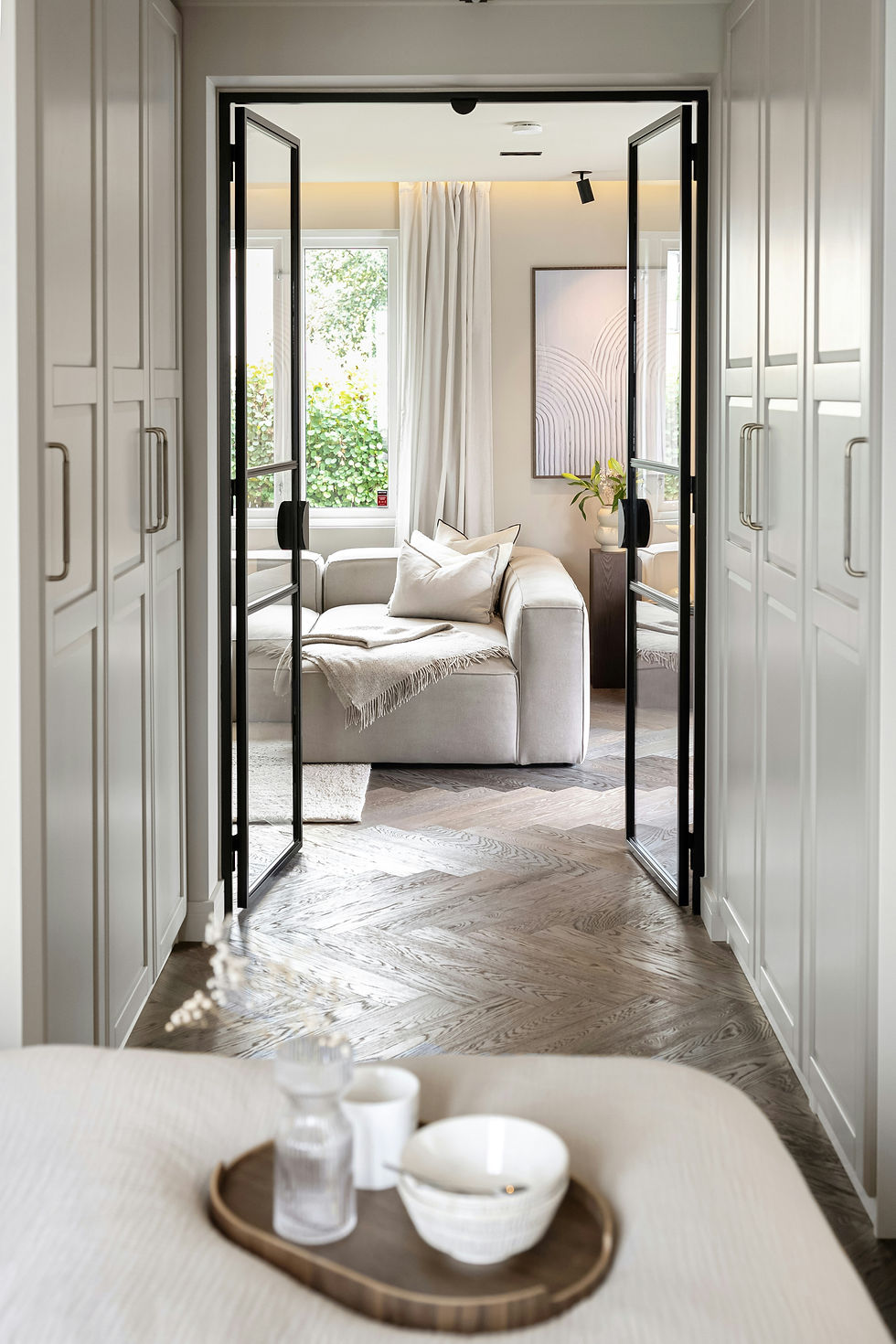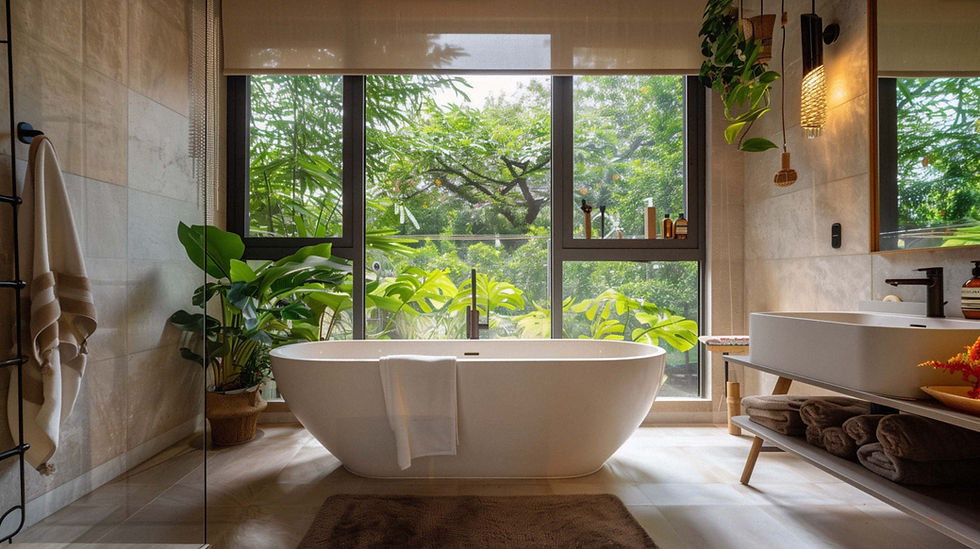Human-Centered Design: Crafting Spaces That Heal, Inspire, and Belong
- Johanne Morin

- Aug 15
- 2 min read
Updated: Aug 20
The Evolution of the Built Environments for Well-Being.

Your Home, Designed Around You: The Science of Human-Centered Living
Imagine walking into your home and feeling instantly at ease.The lighting feels just right, the air is fresh, and every space flows naturally with your daily routine. That’s the essence of human-centered design—creating spaces that work for you, not the other way around.

1. What Is Human-Centered Design in Homes?
Human-centered design (HCD) prioritizes the needs, well-being, and daily life of inhabitants when shaping environments. In residential spaces, this approach means reimagining homes as extensions of their occupants—spaces that nurture, support, and intuitively adapt to users’ physical, mental, and emotional rhythms.
2. Research-Backed Impact in Residential Contexts
Biophilic Design and Stress Recovery
A recent study using immersive virtual environments demonstrated that homes incorporating natural light, greenery, and ventilation reduced stress levels significantly. Participants in biophilic settings showed a 46% greater reduction in skin conductance (a stress marker) compared to those in non-biophilic environments Frontiers.
Holistic Comfort through Biophilic Features
Another study of high-density urban living spaces revealed that integrating nature-inspired elements—light, texture, sound, and green facades—enhances holistic well-being, both physically and psychologically MDPI.
UX (User Experience design) Design in Home Environments
In an architectural design project focused on residential environments, designers employed iterative, user-informed mockups—including ramps adaptable to diverse heights and shared courtyards. This cycle of feedback led to spaces highly tailored to occupant needs, improving daily usability and satisfaction Longdom.
3. Why It Shapes Successful Residential Design
Emotional Resonance: Spaces designed with empathy feel more intuitive and emotionally soothing.
Stress Reduction: Studies show that even visual or virtual biophilic exposure fosters physiological calm.
Functional Elegance: Tailoring environments to actual user needs—rather than ideal assumptions—leads to more adaptive, meaningful homes.

4. Real-World Application Steps
Human-centered design turns houses into sanctuaries—where comfort, clarity, and connection are embedded in every detail.

The Science Behind Feeling Good at Home
Nature in Your Home = Less Stress
Research shows that homes with natural light, greenery, and fresh airflow can lower stress levels dramatically. One study found that spaces with biophilic (nature-inspired) design reduced stress markers by nearly 50% compared to homes without these elements.
Your Comfort Is More Than a Luxury—It’s Health
Homes designed with natural textures, calming colors, and even gentle sounds from nature can boost mood, improve sleep, and help you feel more grounded. The science is clear: our bodies and minds respond positively to environments that reflect the rhythms of the natural world.
Spaces That Fit Your Life
When a home is designed around your needs—your morning routine, your hobbies, your personal comfort—it’s not just more functional, it’s more you. Studies show that people feel more connected and satisfied when their homes reflect their personal habits and style.

Related Resources
Applied Human Factors in Residential Architectural Design by Longdom Journal of Ergonomics




Comments